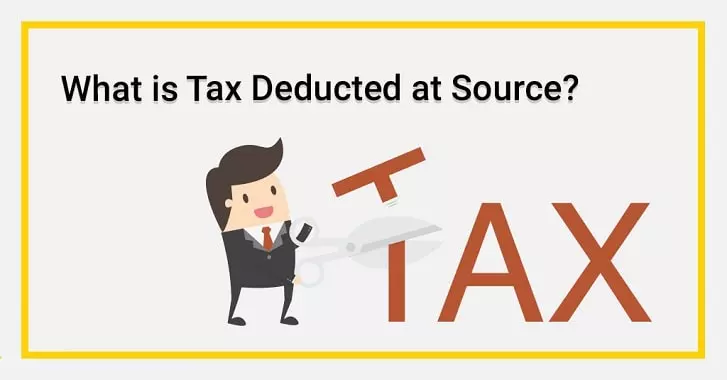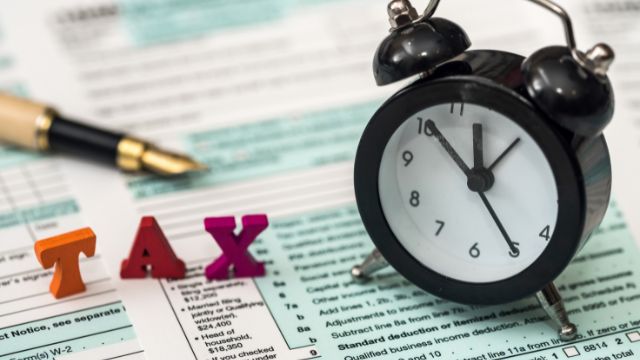TDS stands for tax deduction at source. Tax Deduction at Source means that a certain portion of your tax will be deducted at the source of income itself. An example of this could be when you are receiving rent. If the rent is more than a certain amount, then the tenant must deduct the tax from the rent and deposit it on your behalf. This is a direct tax collected from your income and part of your income tax itself. The provision of TDS was created under Income Tax Act 1961. In addition, there are tax rates for every given situation, which need to be followed.
🤔 What is a Tax Deduction at Source (TDS)?
Tax Deduction at Source provision was created in the Income Tax Act of 1961. This was done to reduce tax evasion; today, everyone is equally responsible for TDS. When working, your employer must deduct the tax from your salary and deposit it on your behalf. Similarly, the company must deduct tax if you earn a dividend of more than Rs 2500. The tax rate for such cases is 10%. If you are earning more than Rs 10,000 interest in the bank, you will also experience a 10% tax deduction from the bank. Similarly, there are many cases where you need to account for the same while receiving your income.
There are various types of TDS applicable in India, depending on the nature of the transaction and the parties involved. Some common types of TDS in India include:
- Salary TDS: Employers deduct TDS from the salaries of their employees based on their income tax slab rates.
- Interest TDS: Banks, financial institutions, and other entities deduct TDS on interest income earned from fixed deposits, recurring deposits, savings accounts, etc., exceeding certain specified thresholds.
- Contractor and Professional TDS: TDS is deducted from payments made to contractors, freelancers, consultants, professionals, etc., for services rendered.
- Rent TDS: TDS is deducted from rental payments exceeding a certain threshold amount.
- Commission TDS: TDS is deducted from commission payments exceeding specified limits.
- Dividend TDS: TDS is deducted on dividends paid by companies to their shareholders.
- Sale of Property TDS: TDS is applicable on sale of immovable property exceeding specified thresholds.
- Lottery and Gambling TDS: TDS is deducted on winnings from lotteries, crossword puzzles, card games, and other gambling activities exceeding specified limits.
- Insurance Commission TDS: TDS is deducted on commission paid to insurance agents exceeding specified limits.
-
Royalty and Technical Fees TDS: TDS is deducted on payments made for the use of intellectual property rights, technical know-how, etc., exceeding specified limits.
There are many advantages & disadvantages of Tax Deduction at Source. We have listed them in the sections below.
👍 Advantages of Tax Deduction at Source (TDS)
In this section, we have covered all the advantages of Tax Deduction at Source (TDS).
1. Prevents Tax Evasion
With Tax Deduction at Source, the tax gets deducted even before you get the money. The most important advantage of Tax Deduction at Source is that it reduces tax evasion. Since people are forced into paying the tax, tax evasion is reduced. Please note that Tax Deduction at Source cannot eliminate tax evasion, but it certainly reduces the magnitude.
2. Steady Source for Government
With the help of the Tax Deduction at Source, the government receives monthly payments. If you look at your salary slip, the tax is deducted monthly. This means that the Tax Deduction at Source generates a steady income for the government, which is necessary for the state.
3. Spreads Tax Liability
If you calculate your tax liability for the year, it could be way too much. Paying it in the form of a Tax Deduction at Source spreads your tax liability over months. This is more like an EMI deduction even before the financial year ends. So this enables you to meet your tax liabilities with ease.
4. Higher Compliance
Since the tax rate for the Tax Deduction at Source is low, higher compliance can be ensured. Moreover, it is mandatory to get Tax Deduction at Source in certain cases. So, it becomes easy to enforce the deduction and get the taxes from the people.
5. Automatically Deducted
You don’t have to do anything if you are receiving income. Your tax will be deducted automatically, and you will get the balance payment. There is no documentation or any other thing that comes under your responsibility. So, this factor also makes it easy for you to pay the tax.
6. Pre-Calculated
The tax slabs for the Tax Deduction at Source are very clear. There is no personal information that you need to share, and hence it is easy to calculate as well. There is no need for professional help when calculating Tax Deductions at Source for anyone.
👎 Disadvantages of Tax Deduction at Source (TDS)
Let us now check out the disadvantages of Tax Deduction at Source (TDS).
1. High Tax Rates
Under most slabs, the Tax Deduction at Source stands at 10%, and some may debate that this is on the higher side. So, even if you are eligible for a tax rebate or nil tax, you pay as per the Tax Deduction at Source laws. You have to claim a refund for this excessive tax later.
2. Discourage People of Higher Income Groups
As your income increases, your tax liability will also increase. In such a case, the net payment would not have an impact that it would have had otherwise. So, Tax Deduction at Source may discourage people from working hard and gaining incentives.
3. Longer Return Cycle
If the excess tax has been paid or your total Tax Deduction at Source is more than the tax liability, you need to claim a refund. The problem is that the refund can only be claimed after the end of the financial year. This is something that is frowned upon.
4. Can Get Complicated
Tax Deduction at Source can get complicated if you don’t know about taxation or income tax. Getting professional help for Tax Deduction at Source may be costly as the tax consultants charge a recurring amount to deduct the tax and pay it against the first party.
TDS FAQs
Q1. Is There Some Way That I Can Claim Back TDS That Has Been Deducted From My Payment Or Salary?
Ans: Yes, you can definitely claim back the TDS that has been snatched away from your hard-earned money! The government may have taken a chunk of your salary, but you can get it back by filing your income tax return (ITR). If you have paid more than what you were supposed to, you can claim a refund of the extra tax you have paid.
Q2. Can TDS Be Deducted When Payments Are Made To Foreign Companies Or Individuals?
Ans: Well, the truth is, TDS even applies when you’re dealing with foreign companies or individuals. However, the TDS rate varies depending on the type of payment, the country of the receiver, and the tax treaty between the two countries.
Q3. Are There Any Exemptions From TDS For Certain Types Of Payments Or For Certain Types Of Taxpayers?
Ans: Well, if you’re not earning above a certain amount, then you may not have to pay TDS. If your income is less than the minimum tax threshold, it’s like getting a free pass, and you can keep all the money you make without worrying about TDS. Similarly, if you’re making payments to certain types of institutions or even the government, then you’re exempt from TDS.
Q4. How Does TDS Impact The Cash Flow Of Businesses?
Ans: TDS is like a double-edged sword when it comes to businesses. On one hand, it reduces the amount of cash that the business receives, affecting its ability to meet its financial obligations. But on the other hand, by taking advantage of various TDS provisions, businesses can reduce the impact of TDS on their cash flow and keep their operations running smoothly, like a well-oiled machine.
Q5. How to Get a Refund for Excess Tax Deduction?
Ans: Sometimes, you would have paid an extra net tax even after Tax Deduction at Source. This may be because you have already paid advance tax, and in such cases, TDS adds to your total tax. The good thing is that you can claim a refund in such cases. You need to file an income tax return to claim a refund of excess tax that has been paid under your account. You need to mention all the details and corrections during the income tax return. Based on this, the tax will be calculated, and the return will be processed along with interest incurred for the given financial year.
Conclusion
This was all about the Tax Deduction at Source. We hope the page has helped you understand what TDS is and how it works. In a way, it is a necessary evil. This is mainly because of the multiple advantages you get from Tax Deductions at Source. You can check the official income tax website to learn more about the Tax Deduction at Source and its tax rates. Apart from this, the Tax Deduction at Source will reflect under your PAN, so you won’t have to do anything additional while submitting the income tax return.
Related Topics
- Indirect Tax Advantages and Disadvantages
- Direct Tax Advantages and Disadvantages
- Value Added Tax (VAT) Advantages and Disadvantages















